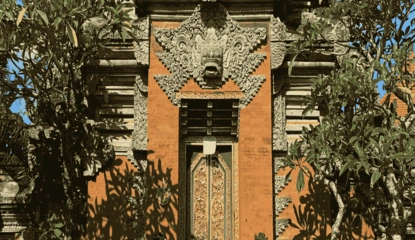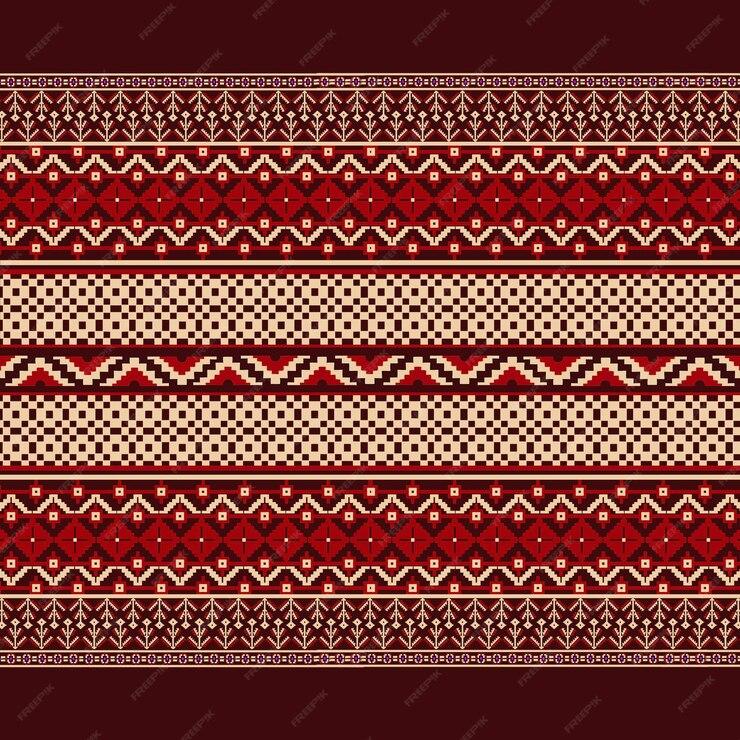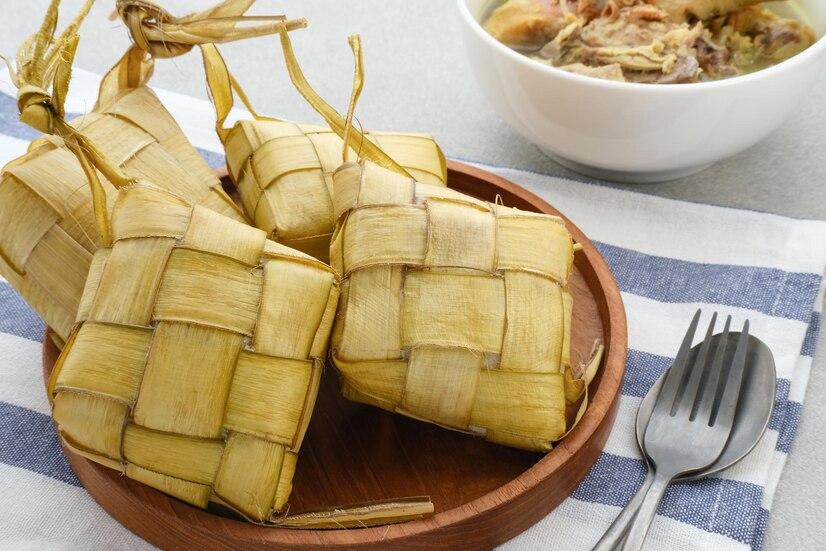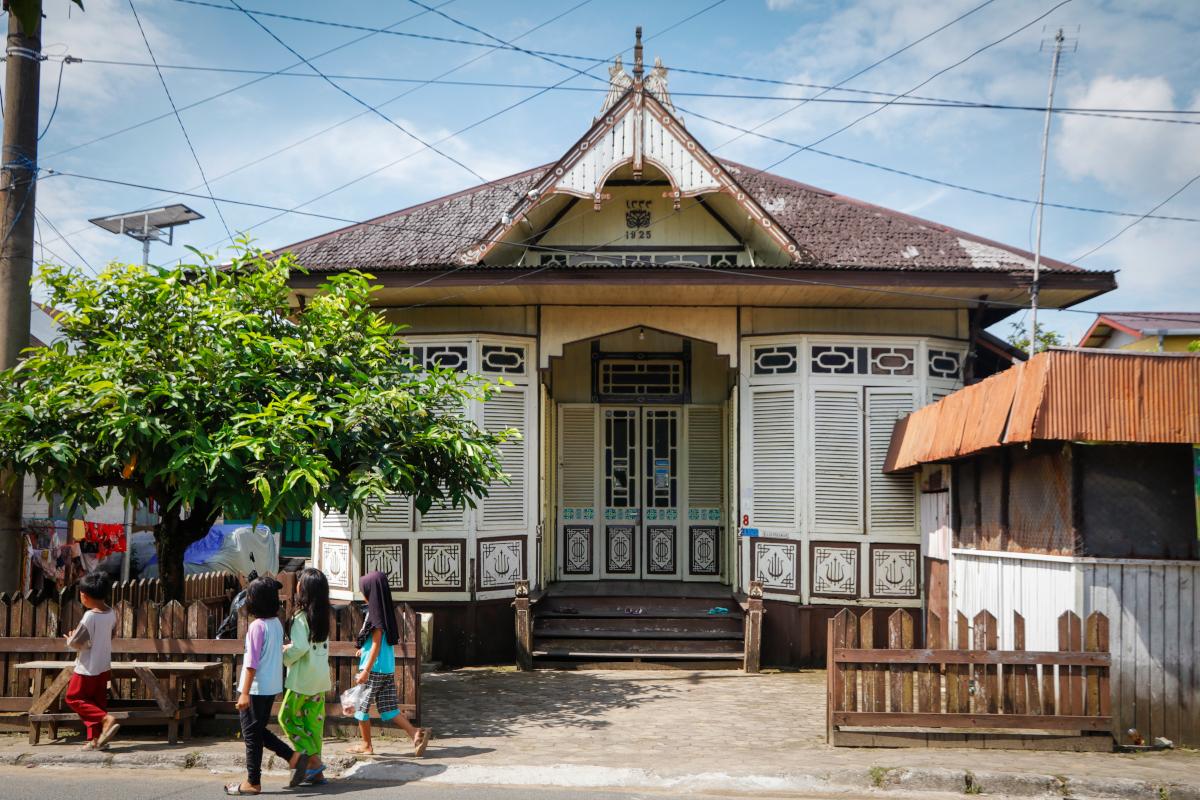Sasirangan fabric is one of the textile cultural heritages originating from South Kalimantan, Indonesia. Known for its unique production technique and motifs rich in meaning, Sasirangan fabric is used in various traditional ceremonies and holds deep philosophical values. This article will discuss the distinctive features, motifs, usage, materials, and unique facts about Sasirangan fabric.
1. Distinctive Features of Sasirangan Fabric
Sasirangan fabric has characteristics that set it apart from other traditional fabrics, both in terms of production techniques and the patterns produced. One of the main distinctive features of Sasirangan fabric is the ikat celup technique, in which parts of the fabric are tied with threads or strings before being dipped into dye. This process creates unique patterns that are often unrepeatable, making each piece of Sasirangan fabric one of a kind.
Sasirangan fabric is also known for its bright colors and geometric patterns. The fabric is dyed using both natural and synthetic dyes, creating striking colors such as red, yellow, green, and blue. The final result is a fabric that appears layered with rich, contrasting colors.
Additionally, Sasirangan fabric has a soft and comfortable texture, making it suitable for use in various climates, whether hot or cold. The fabric is also versatile, wearable in different styles and occasions, and durable due to the high-quality production process.
2. Motifs of Sasirangan Fabric
The motifs in Sasirangan fabric are highly varied and rich in symbolism. These motifs are usually related to nature, social life, and the culture of the Banjar people, the main ethnic group in South Kalimantan. Some common motifs found in Sasirangan fabric include:
- Enggang Bird Motif:
The Enggang bird is an important symbol in Kalimantan's culture, especially among the Banjar people. This motif represents wisdom, strength, and peace. The Enggang bird is also associated with the symbol of freedom and guardian of nature.
- Soka Flower Motif:
The Soka flower motif carries a symbolic meaning of beauty and sincerity. This motif is often used in weddings or traditional ceremonies, symbolizing love and happiness.
- Leaf and Flower Motif:
Like many other traditional Indonesian fabrics, Sasirangan fabric uses natural motifs such as flowers and leaves. These patterns represent harmony with nature and the fertility of life.
- Knot Motif:
This motif represents strong bonds within families or communities. In Banjar culture, knots also symbolize unbreakable unity, both in social relationships and spiritual life.
Each motif in Sasirangan fabric is not only decorative but also reflects cultural values and deep philosophies that form the foundation of South Kalimantan's way of life.
3. Usage of Sasirangan Fabric
Sasirangan fabric is commonly used in various traditional ceremonies and important events in South Kalimantan. Some uses of Sasirangan fabric include:
- Weddings:
Sasirangan fabric is often worn in Banjar traditional weddings. The bride and groom typically wear Sasirangan fabric with specific motifs that symbolize happiness, longevity, and prosperity in marriage.
- Traditional Ceremonies:
The fabric is also used in various traditional events such as religious ceremonies, community festivals, and other cultural celebrations. The use of Sasirangan fabric in these events signifies respect for tradition and cultural symbols.
- Daily Wear:
In addition to formal events, Sasirangan fabric is also commonly worn in daily life by the Banjar people. It is used to make traditional clothing such as shirts, sarongs, or shawls.
- Accessories:
Sasirangan fabric is also used for accessories such as shawls, bags, and other ornaments. With its attractive colors and motifs, Sasirangan fabric is a popular choice to enhance one's appearance.
4. Materials of Sasirangan Fabric
Sasirangan fabric is typically made from cotton or silk, chosen for their lightness, dye absorption properties, and comfort. Cotton fabric provides comfort in hot weather, while silk is often selected for special events due to its softness and elegant sheen.
The dyeing process of Sasirangan fabric uses both natural and synthetic dyes. Natural dyes, such as indigo, turmeric, or plant leaves, are often used to create soft, natural colors. Synthetic dyes allow for vibrant, stable colors that last longer.
5. Unique Facts About Sasirangan Fabric
Sasirangan fabric has several unique characteristics that distinguish it from other traditional fabrics, including:
- Unique Ikat Celup Technique:
The production of Sasirangan fabric involves the very distinctive ikat celup technique. Each pattern is created through precise hand-tying, making every piece of Sasirangan fabric unique and irreplaceable.
- Uniqueness of Motifs:
The motifs used in Sasirangan fabric are not only beautiful but also rich in cultural meaning. These motifs often contain deep philosophical values and symbols that reflect the relationship between humans, nature, and the divine.
- Long Production Process:
The creation of Sasirangan fabric takes a considerable amount of time, as each pattern is manually produced. This process involves high skill and precision, making Sasirangan fabric highly valuable.
- International Recognition:
Sasirangan fabric has gained international attention and is regarded as one of Indonesia’s unique traditional textiles. This fabric is not only used in Indonesia but is also marketed abroad as a symbol of high-quality craftsmanship."










